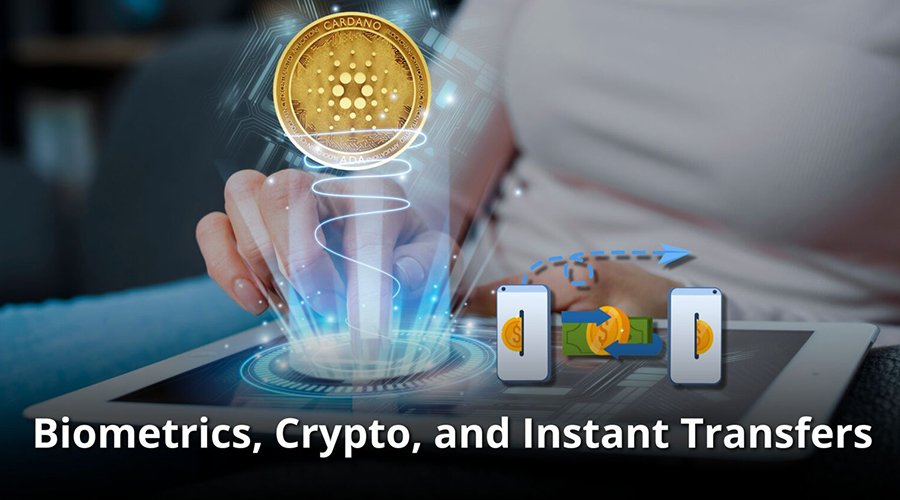
How Biometrics, Crypto, and Instant Transfers are Shaping The Way We Pay
Posted on August 21, 2024
In recent years, the landscape of financial transactions has undergone a dramatic transformation, driven by advancements in technology and changing consumer behaviors. The integration of biometrics, cryptocurrency, and instant transfers is revolutionizing the way we pay, offering convenience, security, and speed. This blog explores these innovations and their implications for the future of payments.
The Rise of Biometrics in Payment Systems
Biometric authentication uses unique physical characteristics, such as fingerprints, facial recognition, and iris scans, to verify identity. As consumers increasingly prioritize security in their transactions, businesses are leveraging biometrics to provide a seamless and secure payment experience.
- Enhanced Security: Traditional passwords can be easily forgotten or hacked. Biometrics, however, are much harder to forge, making transactions safer. For instance, Apple Pay and Google Pay utilize fingerprint and facial recognition technologies to authorize payments, significantly reducing fraud.
- Speed and Convenience: Biometric payments streamline the checkout process. Users can make purchases with a simple scan or touch, eliminating the need to fumble for cards or enter lengthy passwords. This speed enhances the customer experience, particularly in fast-paced environments like retail and dining.
- Broader Adoption: As smartphones and wearables increasingly incorporate biometric technology, consumers are becoming more comfortable using these methods for payments. Financial institutions are also adopting biometric solutions, further legitimizing this trend.
The Emergence of Cryptocurrency
Cryptocurrency, particularly Bitcoin and Ethereum, has gained traction as an alternative form of payment. Digital currencies operate on decentralized blockchain technology, offering distinct advantages:
- Lower Transaction Fees: Traditional payment systems often impose high fees, especially for international transactions. Cryptocurrency transactions can significantly reduce these costs, benefiting both consumers and businesses.
- Increased Transparency and Security: Blockchain technology ensures that all transactions are recorded and immutable, reducing the risk of fraud. This transparency builds trust among users, making cryptocurrencies an appealing payment option.
- Global Accessibility: Cryptocurrencies are not bound by geographic limitations, enabling people in underserved regions to participate in the global economy. This inclusivity has the potential to transform commerce, allowing businesses to reach new markets.
- Innovative Payment Solutions: Companies are increasingly adopting crypto payment gateways, enabling customers to pay with digital currencies. Major retailers, including Overstock and Newegg, now accept Bitcoin, signaling a shift toward mainstream adoption.
Instant Transfers: Speeding Up Payments
Instant transfer technology has changed how consumers and businesses conduct transactions. With traditional banking systems often requiring several days for transfers, instant payments offer a new level of efficiency.
- Real-Time Transactions: Services like Zelle, Venmo, and PayPal allow users to send money instantly, making it easier to split bills, pay for services, or send gifts. This immediacy is particularly attractive to younger consumers who expect convenience in their financial interactions.
- Improved Cash Flow for Businesses: Instant payments benefit businesses by providing quicker access to funds. This improvement in cash flow can be crucial for small and medium-sized enterprises (SMEs), enabling them to manage expenses and invest in growth opportunities more effectively.
- Reduced Risk of Non-Payment: Instant transfers minimize the risk of bounced checks or delayed payments, offering businesses greater security in their transactions. This reliability fosters stronger customer relationships and encourages repeat business.
The Future of Payments
The integration of biometrics, cryptocurrency, and instant transfers is just the beginning. As technology continues to advance, we can expect further innovations in the payment landscape:
- Integration of AI and Machine Learning: These technologies will enhance fraud detection and streamline payment processing, providing even greater security and efficiency.
- Increased Regulation: As cryptocurrencies gain popularity, governments and financial institutions may implement more regulations, which could shape the future of digital payments.
- Enhanced User Experience: Companies will continue to focus on creating seamless and intuitive payment solutions, utilizing emerging technologies to make transactions easier for consumers.
Conclusion
Biometrics, cryptocurrency, and instant transfers are redefining how we think about payments. These innovations not only enhance security and convenience but also pave the way for a more inclusive and efficient financial ecosystem. As consumers embrace these changes, businesses must adapt to meet evolving expectations, ensuring they remain competitive in an increasingly digital world. The future of payments is bright, and we are only just beginning to scratch the surface of what is possible.
Categories: Cryptocurrency
